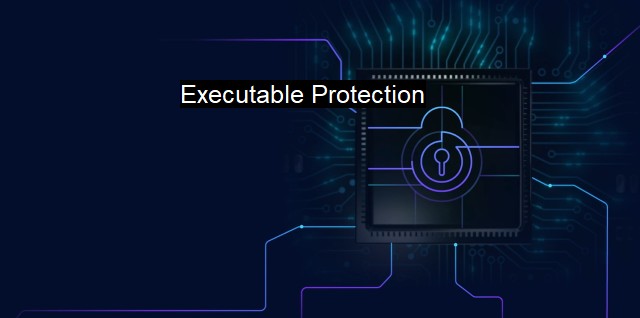What is Executable Protection?
Protecting Computer Systems: The Role of Executable Protection and Antivirus Software
Executable Protection refers to a series of steps and measures taken, either through special algorithms or the usage of specific software, to protect executable files from being infected with malicious programs such as viruses, malware, spyware, and worms, among others. This topic is of paramount importance in the realm of cybersecurity and antivirus software development given the potentially devastating ramifications of breeching sensitive data.Executable files hold particular significance in the realm of computers and digital systems as they are specifically designed files that undertake certain operations or 'execute' tasks at the request of users, or autonomously when programmed to do so. These tasks range from mundane things like opening a specific tool or document file to the more intensive process of running an entire software application or Operating System. Owing to their essential and resourceful nature, these files make attractive targets for many harm-minded hackers and are often vulnerable to cyber threats.
Executable Protection, therefore, represents the protective mechanism developed and employed by cybersecurity specialists to safeguard these files from possible cyber intrusion and the different types of malicious software amplicitly mentioned earlier. The concept goes hand in hand with the broader ideas of cybersecurity and antivirus protection which guard the privacy, integrity and availability of information on computers, digital, and network systems.
There are several methods used to establish executable protection on different systems. Techniques vary depending on several factors including the system OS, the nature of the executable file, and the potential threats identified. A crucial method of ensuring executable protection is through the implementation of antivirus software which typically scan systems for any known threats, isolates them and consequently deleting them as required.
Many antivirus software programs also use what is referred to as heuristic analysis, where executable files are observed in a safely isolated environment for any suspicious behaviors. This method of protection is valuable against novel threats often called 'zero-day threats' which are previously unknown to cybersecurity specialists hence have no prior means of detection. It seeks to identify harmful effects, suspect actions, or irregular characteristics not typical in formal software thus help in enhancing the robustness of the antivirus capability.
In addition to the deployment of antivirus software, organizations often incorporate policies that mandate the restriction of running unapproved executable files to have another layer of protection. Cybersecurity policies can include rigorous measures such as application whitelisting, a practice that only allows the execution of approved applications, therefore, mitigating against unauthorized or harmful executables.
Operating system-level safeguards, such as assigning privileged access and incorporating additional protective layers on system files also play a significant role in securing executable files. For instance, User Account Control (UAC) in Microsoft Windows prompts a permission or notification dialogue when an application seeks to make a system-level change. This stops unauthorized executables from making changes to a system without having proper authorization.
Encryption and code signing are further utilized as tools in executable protection. Digital certificates are used in code signing to verify and validate the genuineness of a piece of software. Meanwhile, encryption secures the executable file itself and wraps it in an additional protective layer that becomes navigable only with the correct decryption keys.
While executable protection is just a single part of the broader mosaic that constitutes the cybersecurity landscape, it is a crucial component requiring adequate understanding and application to protect digital systems against cyber threats. The developments and advancements in cybersecurity continue to further enhance existing executable protection measures, thereby adapting to the constantly evolving challenges posed by the innovative world of hacking and improving the safety and security of digital systems.

Executable Protection FAQs
What is executable protection in cybersecurity?
Executable protection refers to a set of measures to prevent malicious or unauthorized code from executing on a computer system. It involves various techniques such as antivirus software, firewalls, and access controls to safeguard the system from potential threats.Why is executable protection important in cybersecurity?
Executable protection is crucial in cybersecurity because hackers and malicious actors often use executable files to gain unauthorized access to a computer system, steal data, or launch cyber attacks. Protecting the system from these threats is essential to maintain the integrity and security of the data and the network.What are the common methods of executable protection?
Common methods of executable protection include antivirus software, firewalls, intrusion detection and prevention systems, and access controls. These tools help detect and block malicious code from executing on the system and prevent unauthorized access to the network.How effective is executable protection against cyber threats?
Executable protection is highly effective against most cyber threats, but it is not foolproof. Cybercriminals constantly develop new and advanced techniques to bypass security measures, and it is essential to keep the security tools up-to-date and apply best practices to minimize the risk of a breach. Additionally, user behavior and education play a crucial role in preventing cyber attacks.| | A | | | B | | | C | | | D | | | E | | | F | | | G | | | H | | | I | | | J | | | K | | | L | | | M | |
| | N | | | O | | | P | | | Q | | | R | | | S | | | T | | | U | | | V | | | W | | | X | | | Y | | | Z | |
| | 1 | | | 2 | | | 3 | | | 4 | | | 7 | | | 8 | | |||||||